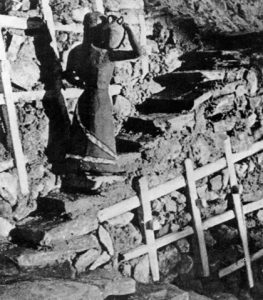Greece, Athens
عيون وينابيع تل أكروبوليس

Hydria Virtual Museum
الصلة بالموضوع
بدأت منطقة أثينا تصبح مأهولة بالسكان في نهاية العصر الحجري الحديث، فيما بين 3500 و 3200 قبل الميلاد. ويبقى عدد قليل من الآثار من تلك الفترة تشهد بأن أول المستوطنات كانت علي التل الص�ري، الذي سمي في وقت لاحق الأكروبوليس.
كانت المياه بالطبع شرطا أساسيا وحيويا لا�تيار موقع محدد لإنشاء المستوطنة وتم الحصول عليها عن طريق حفر الآبار. يقدر أنه في عصور ما قبل التاري� كانت توجد ٢١ بئرا بعمق ٣-٤ أمتار، مما يدل على طبقة ص�رية غنية بالمياه. في وقت لاحق، بنيت في الحقبة التاري�ية ينابيع عدة حول تلة الأكروبوليس، لاستغلال هذه التيارات الجوفية التي توفر إمكانية الوصول إلى موارد المياه الصالحة للشرب في أوقات الحصار، عندما كان الأثينيون يتجمعون وراء جدران الاكروبول. في دراسة الحالة هذه يتم استكشاف ينابيع وعيون الاكروبول:
١) عين الماء والينبوع المعروف كليبسيدرا والتي ذكرها كثير من الكتاب.

Hydria Virtual Museum
٢) عيون أسكليبيون، وتجمع بين عين ماء وينبوع في دار الشفاء في أسكليبيوس.

Hydria Virtual Museum
٣) الينبوع الميسيني، الذي يرتبط مع لحظة بطولية في تاري� اليونان الحديث ، عندما است�دم اثنين من الطلاب اليونان ممر سري في كهف الينبوع أثناء الاحتلال النازي (1941) للوصول إلى المستوى العلوي من الأكروبوليس ، وإنزال العلم النازي.

Hydria Virtual Museum

